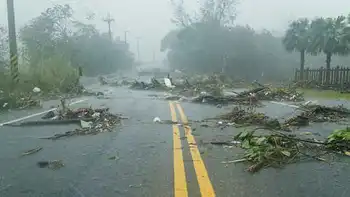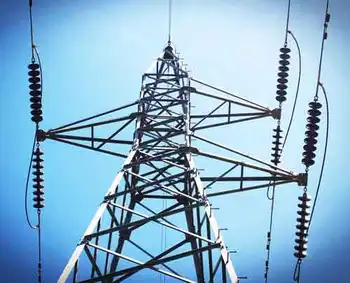Grid upgrade might cost Rhode Island $63 million
- A proposal before federal regulators would require Rhode Island ratepayers to pony up some $63 million to upgrade antiquated sections of the power grid in New England, even though the state's transmission system is working just fine.
The head of Rhode Island's Public Utilities Commission opposes the idea, and says that the ratepayers who live in the areas that will benefit from the upgrades should pay more than everyone else.
"If Connecticut were upgraded, we don't need that. Connecticut needs it," said Elia Germani, chairman of the PUC.
Last week's massive power outage has called attention to the aging transmission lines within the nation's power grid.
In New England, weak transmission systems were blamed for the outage that struck southwest Connecticut and small sections of Massachusetts and Vermont. The rest of the region was not affected, largely because other parts of the system are in good shape, power-grid officials said.
While regulators, utility companies and the company that operates New England's power grid agree that upgrades are needed in Connecticut and elsewhere, there's no consensus about who should pay for it.
Some argue that the entire region would benefit from the improvements, so all electricity customers in New England should share the costs equally. Others, such as Germani, say local areas that will see the most benefit from power-grid upgrades should shoulder more of the costs.
ISO New England, which operates the six-state power grid, has estimated that $900 million needs to be spent to improve the region's power grid over the next 5 to 10 years.
"The projects are to bolster our grid for New England," said Steve Whitley, chief operating officer for ISO New England, in a telephone interview yesterday. "If we have pockets that are unreliable, it can affect the whole grid."
About $700 million of that would beef up the transmission system in southwest Connecticut, which ISO New England has described as "antiquated" and the "weak link" in the region's power grid.
Other projects include transmission improvements in Massachusetts and Vermont. There are no plans for work in Rhode Island, Whitley said.
ISO New England and New England Power Pool, an association of electric utility companies in the region, have proposed paying for upgrades, such as those planned for Connecticut, by sharing the costs proportionally among all the states, based on how much electricity is used.
The two organizations filed such a plan, as they were required to do by the Federal Energy Regulatory Commission, or FERC.
The proposal calls for ratepayers to pay the same amount to cover the upgrades, regardless of which state they are in.
They would pay according to how much electricity they use.
Rhode Island consumes about 7 percent of New England's electricity, Germani said. The current plan to invest $900 million in New England would mean that electricity customers in the state would be responsible for about $63 million for the improvement projects.
If that was divided into 10 years, the typical electricity customer in the state might pay an extra $1.25 to $1.50 a month, Germani estimated.
The concept of sharing costs among all ratepayers isn't a radical new idea. Whitley says that's the way it has worked for years. FERC ordered the New England Power Pool to take a look at how costs are allocated, and the filing submitted in July essentially keeps the same system in place, he said, with a few tweaks.
Some want that changed. Germani, along with regulators in Maine, propose spreading only half the cost of improvements among all ratepayers. The other half would be paid for by the local area that gets the most benefit.
Germani said that Rhode Islanders should not have to pay for the problems in Connecticut because, to some degree, that state brought the problems on itself. He said the Connecticut state legislature had imposed a moratorium that restricted transmission improvements. And the not-in-my-backyard phenomenon among residents in Connecticut has contributed to the problems as well, he said.
Whitley said the problem with that approach is that it's very difficult to tell who is the beneficiary of a particular project.
"You can't chase who really got the benefit," he said. "It's just an impossible task."
The New England grid is closely tied together, and improvements to its reliability benefit all the states, he said.
"We look at the system in total, not from the perspective of one state," he said. "The problem of the parochial standpoint is it depends on the time you look at it."
For example, right now, Connecticut needs infrastructure improvement. Next time, it may be Rhode Island. When that time comes, ratepayers from elsewhere would help pay for improvements here, he said.
"I certainly agree, I wish we had the transmission projects built in Connecticut sooner."
But had they been built, he said, they would have been paid for under this same cost-sharing methodology that's long been in place.
Related News

Kyiv warns of 'difficult' winter after deadly strikes
KYIV - Ukraine has warned that difficult winter months lay ahead after a massive Russian missile barrage targeted civilian infrastructure, killing three in the south and wounding many across the country.
Russia launched the strikes as Ukraine prepares for a third winter during Moscow's 19-month long invasion and as President Volodymyr Zelensky made his second wartime trip to Washington.
"Most of the missiles were shot down. But only the majority. Not all," Zelensky said, calling for the West to provide Kyiv with more anti-missile systems.
The fresh attack came as Poland said it would honour pre-existing commitments of weapons supplies to Kyiv, a…




